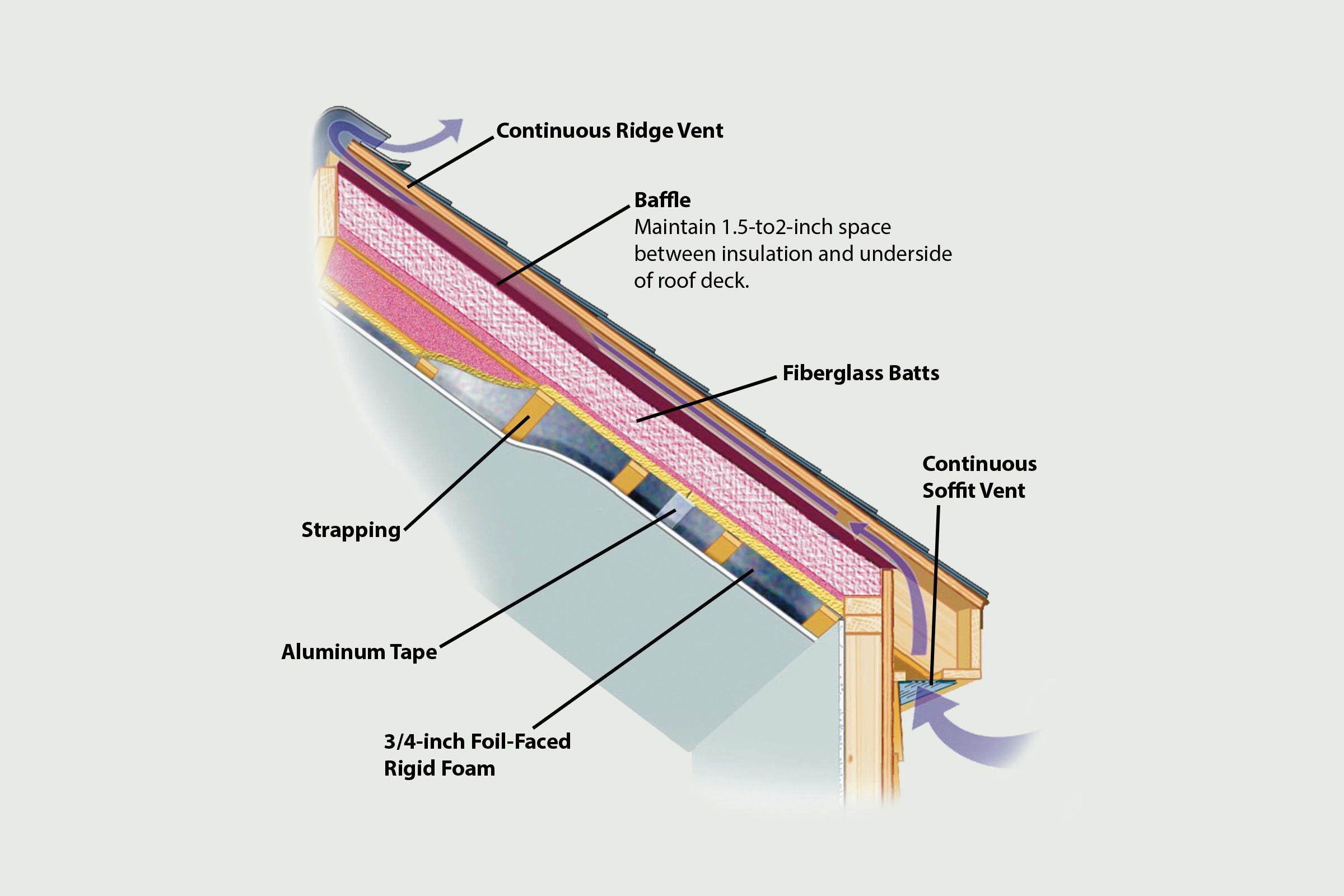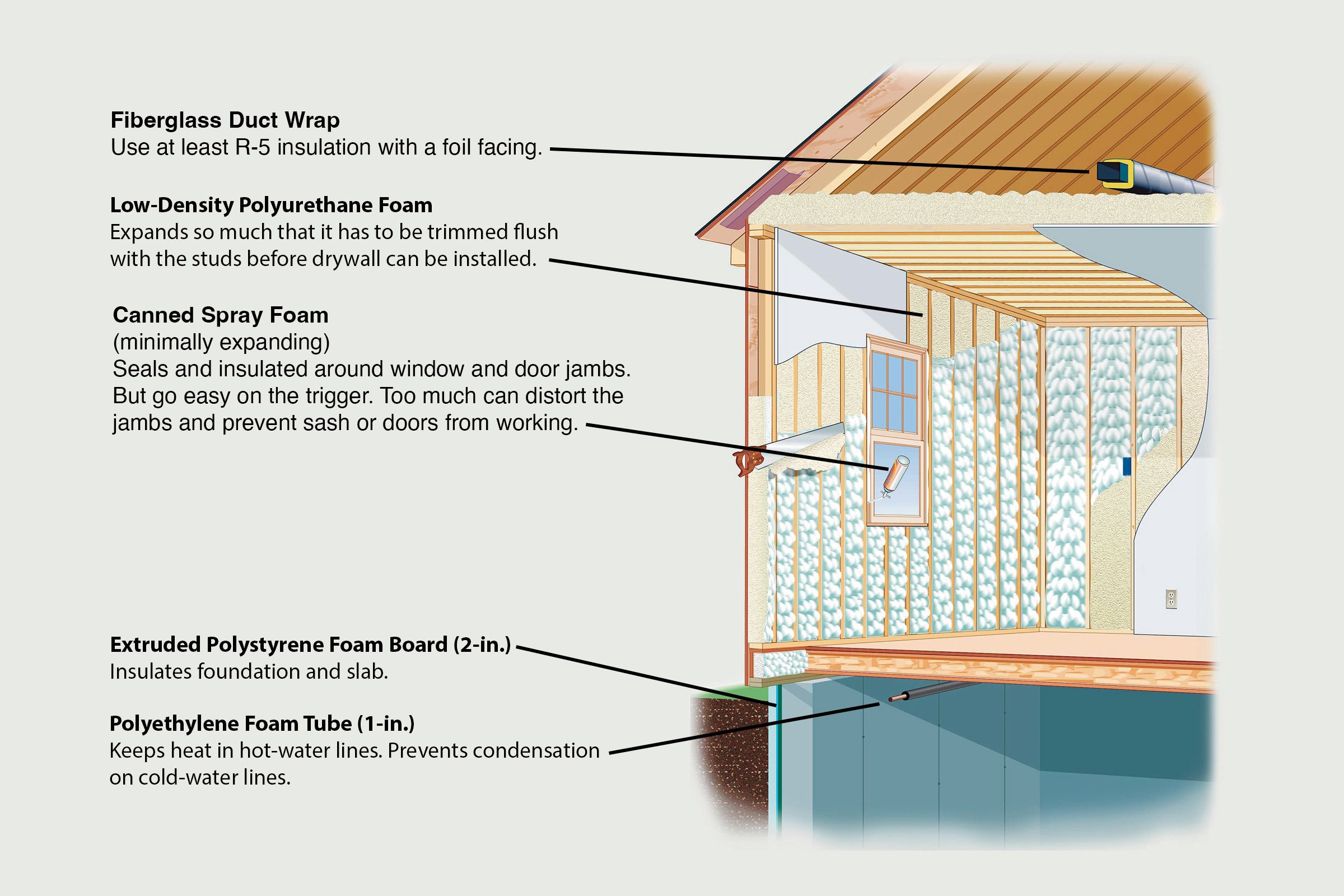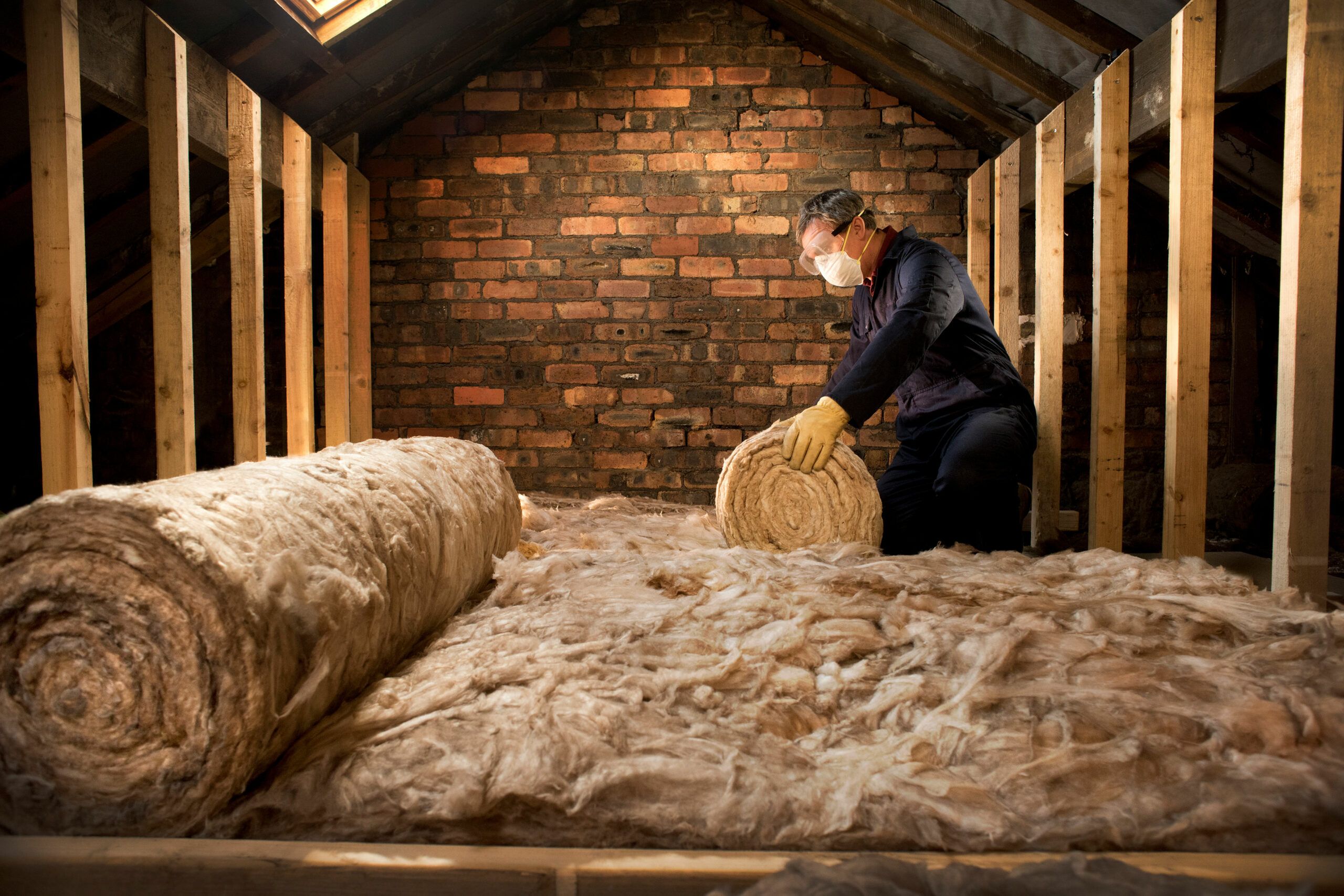Proper insulation maximizes comfort and minimizes energy bills in your home. As This Old House general contractor Tom Silva says, “It’s the wisest way to invest that I know of. A well-insulated house will make you more comfortable in every season. And it’s quieter, too.”
Our guide explores the various types of insulation available, their benefits, and how to choose the right option for your home. We’ll also cover proper installation techniques, common mistakes to avoid, and ways to enhance your home’s energy efficiency through insulation.
Common Types of Insulation Materials
There are several common types of insulation materials, each with its own advantages and application methods. We explore the most popular options below.
Fiberglass Insulation
Fiberglass batts are the most common type of insulation in U.S. homes. They’re inexpensive and quick to install, making them a popular choice for professionals and do-it-yourself (DIY) enthusiasts.
Pros:
- Affordable
- Easy to install
- Predictable R-value when not compressed
Cons:
- Difficult to fit around obstacles without leaving gaps
- Requires a vapor barrier in most climates
- Can irritate the skin and lungs during installation
Silva recommends using unfaced batts covered in plastic with all seams taped shut rather than relying on batts with attached kraft paper facing for vapor protection.

Foam Insulation
Foam insulation, particularly low-density polyurethane spray foam, is Silva’s preferred insulation. It offers several benefits compared to traditional insulation materials.
Pros:
- Forms an airtight seal with studs and sheathing
- Flexes to accommodate seasonal wood movement
- Doesn’t need a separate vapor barrier
Cons:
- More expensive than fiberglass
- Requires professional installation
- Must be protected from fire with drywall or plaster
While the initial cost of spray foam is higher, its superior performance can lead to long-term savings through reduced heating and cooling costs.

Cellulose Insulation
Cellulose insulation uses recycled paper products, primarily newspaper. It’s treated with boron compounds for fire and pest resistance.
Pros:
- Eco-friendly (made from recycled materials)
- Good sound insulation properties
- Can be blown into existing walls without major renovation
Cons:
- Can settle over time, reducing effectiveness
- May absorb moisture if not properly installed
- Requires specialized equipment for installation
Mineral Wool Insulation
Mineral wool insulation, also called rock wool or slag wool, is made from recycled materials such as blast furnace slag and basalt.
Pros:
- Fire-resistant
- Excellent sound insulation
- Moisture-resistant
Cons:
- More expensive than fiberglass
- Can be irritating to the skin and lungs during installation
- Heavier than other insulation types
Specialized Insulation Options
In addition to the common insulation types, several specialized options are available that may work for specific applications or homeowner preferences.
Cotton Batts Insulation
Cotton batts made from recycled denim offer an eco-friendly alternative to traditional insulation materials.
Pros:
- No-itch installation
- Made from recycled materials
- Treated with borates for fire and insect resistance
Cons:
- More expensive than fiberglass
- Lower R-value per inch than some alternatives
- May require a vapor barrier
Radiant Barriers
While not technically insulation, radiant barriers can help keep houses cool by reflecting thermal radiation. They’re particularly effective in warm climates.
Pros:
- Lowers attic temperatures up to 30 degrees
- Effective in warm climates
- Relatively easy to install in attics
Cons:
- Less useful in cold climates
- Requires proper installation to be effective
- May interfere with cell phone or Wi-Fi signals
Extruded Polystyrene (XPS) Insulation
XPS is a rigid foam insulation with excellent moisture resistance and high R-value per inch.
Pros:
- High R-value per inch (R-5)
- Excellent moisture resistance
- Maintains R-value over time
Cons:
- Must be protected from solvents and sunlight
- Flammable and requires fire protection
- More expensive than some alternatives
Choosing the Right Insulation for Your Home
Selecting the appropriate insulation for your home involves weighing several factors to get the right balance between performance and cost.
Factors To Consider Picking Insulation
When choosing insulation, consider the following:
- R-value requirements for your climate zone
- Installation location (walls, attic, basement, etc.)
- Budget constraints
- DIY vs. professional installation
- Environmental concerns
Climate Considerations for Insulation
Your local climate plays a big role in what makes the best insulation for your home. Higher R-values are generally needed in colder climates, while home insulation helps reduce energy bills by keeping heat out in warmer climates.
Insulation Budget Constraints
While higher-quality insulation materials offer better performance, they also have a higher price tag. When weighing the initial cost of insulation, consider the long-term energy savings.
Proper Insulation Placement
Proper insulation placement throughout your home creates a continuous thermal envelope.
Attic Insulation
The attic is one of the most important areas to insulate. It can account for substantial heat loss during winter and a lot of heat gain in summer. When insulating an attic, make sure you do it properly to prevent moisture buildup.
Wall Insulation
Properly insulated walls maintain a comfortable indoor temperature. You can add blown-in insulation to an existing home without major renovations.
Basement and Crawl Space Insulation
Insulating basements and crawl spaces can significantly improve your home’s energy efficiency. The best way to insulate an existing concrete block wall is often to use foam board or spray foam insulation.
Installation Techniques and Best Practices
You’ll have to install your insulation correctly to achieve its rated R-value for maximum energy efficiency. A poor installation can reduce the insulation’s effectiveness and potentially lead to other issues like moisture buildup.
DIY Installation Tips
Take these steps for a DIY installation:
- Wear appropriate protective gear
- Measure carefully and cut the insulation to fit snugly
- Avoid compressing insulation, which reduces its effectiveness
- Seal all air leaks before installing insulation
- Check for ventilation in attics and crawl spaces
When To Hire a Professional
Consider hiring a professional for the following applications:
- Spray foam installations
- Blown-in insulation
- Complex or hard-to-reach areas
- Large-scale insulation projects
Professional installers have the experience and equipment to ensure proper installation and maximum effectiveness.
Common Insulation Mistakes To Avoid
Avoiding these common mistakes helps your insulation perform as intended:
- Compressed insulation: Compressing fiberglass batts reduces their R-value. Batts should fit snugly without being crammed into spaces.
- Gaps and air leaks: Even small gaps can significantly reduce insulation effectiveness. Seal all air leaks before installing insulation and ensure complete coverage.
- Improper vapor barrier usage: Incorrect use of vapor barriers can trap moisture, leading to mold and rot. In most climates, vapor barriers should face the interior in northern, heating climates and the exterior in humid southern climates.

